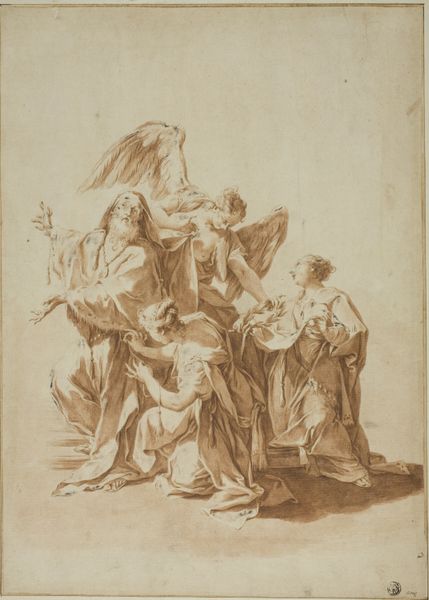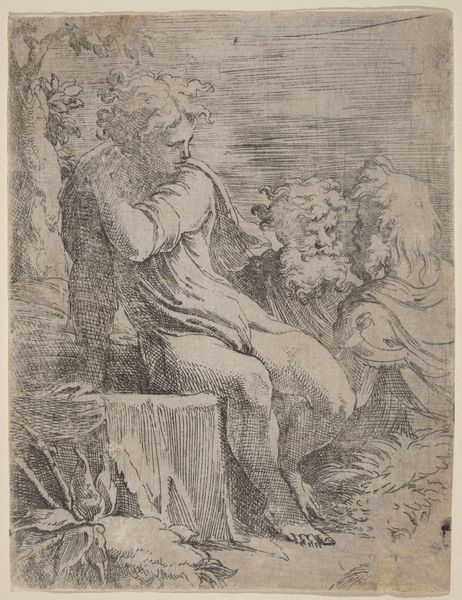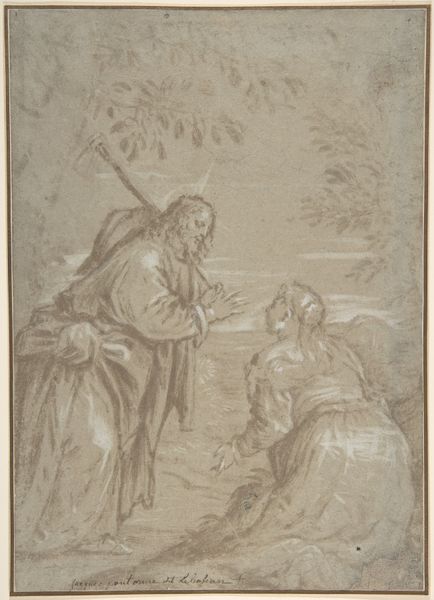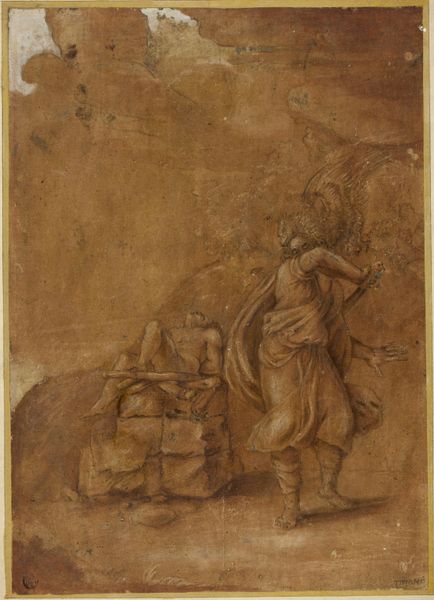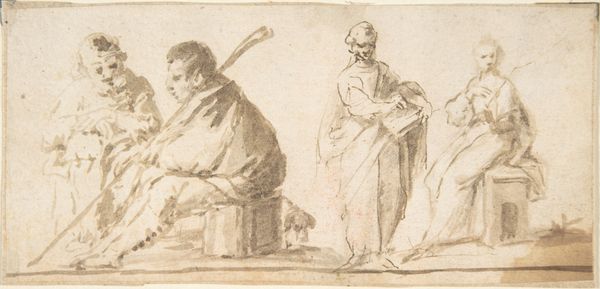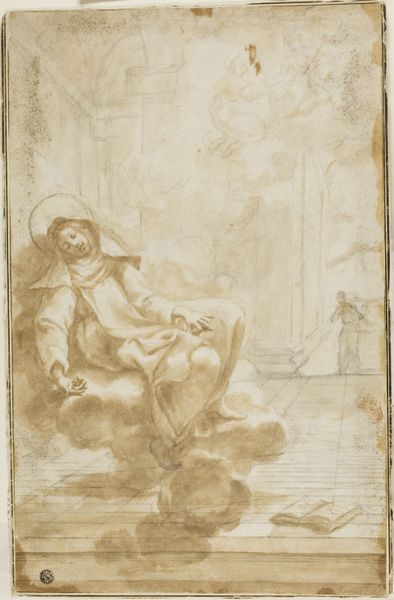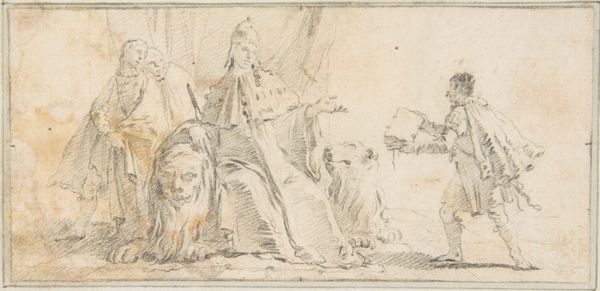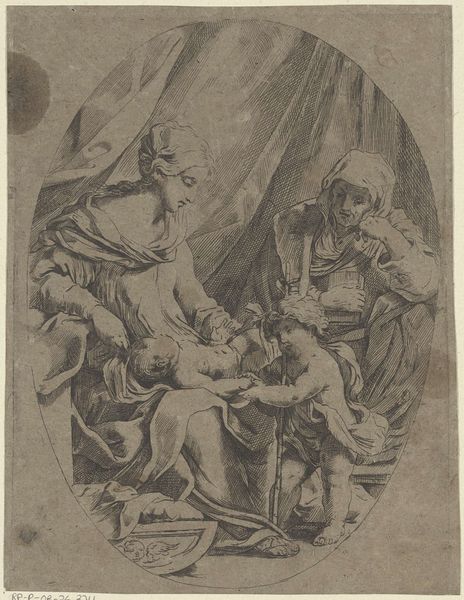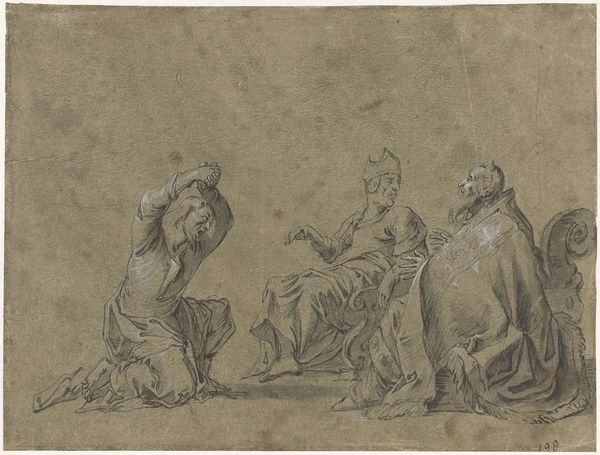
drawing, ink, charcoal
#
drawing
#
narrative-art
#
baroque
#
charcoal drawing
#
figuration
#
ink
#
ink drawing experimentation
#
charcoal
#
history-painting
Dimensions: height 214 mm, width 182 mm
Copyright: Rijks Museum: Open Domain
Curator: Welcome. Today, we'll be exploring Ferdinand Bol’s “The Angel of God Appears to Joshua," a drawing created between 1640 and 1645. Editor: My first impression is one of stark drama. The use of primarily ink and charcoal lends itself well to that mood. There's a rawness, an unfinished quality, that heightens the spiritual tension. Curator: It’s fascinating to consider the materiality here. The tangible texture of the paper, the choice of charcoal and ink, point to a specific workshop practice. Bol was, of course, working in Rembrandt’s studio, so one has to wonder about material availability and constraints within that collaborative context. These were costly materials! Editor: Yes, but the way the artist uses these materials! It is also noteworthy how Bol uses light and shadow. Notice how the figure of the angel practically radiates. This effect of a celestial being made through simple strokes transforms mere material into something awe-inspiring. Curator: Absolutely. This links directly back to Bol’s Protestant upbringing and artistic circle within 17th-century Amsterdam. Images from scripture served as direct means to express religious feelings, yet he was also very good with landscape pieces! The drawing itself becomes an artifact—a testament to his patrons need for religious works of art that he could deliver in the Rembrandtesque style! Editor: But don't lose sight of the figures themselves! Look closely at Joshua. Bol perfectly captured the vulnerability, yet the solid musculature of this commanding general creates that wonderful balance. Note the line that creates a powerful emotional connection—not through sentimentality, but form. Curator: The labour of that artist to craft, for profit, pieces just like that. From processing the material from across the world and making his own mark from the studio. Consider then how, when looked at on a large enough scale, consumption has become less sustainable. And pieces from Rembrandt himself have become less discernible. What if mass production can’t provide these unique, raw, emotionally engaging artworks for audiences of tomorrow? Editor: Precisely! Bol presents, on the surface a piece with some spiritual message that some wish to impose through materiality. But what about, and who even cares, for its message of salvation in that respect when we get wrapped in the lines of his process. Thank you for your thought provoking point.
Comments
No comments
Be the first to comment and join the conversation on the ultimate creative platform.
